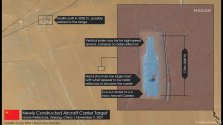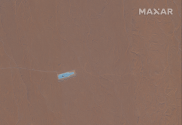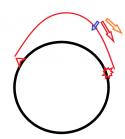View attachment 78894
I saw someone's analysis of this 37km track. The idea is that what this track is simulating is an entire attack sequence against a carrier by a AShBM, from launch to impact. The straight part of the track reflects a carrier undergoing aircraft launching operation at 30 knots, the s-bend reflects the carrier having detected the incoming AShBM halting aircraft operation and performing evasive actions.
Suppose the simulated carrier is suppose to be travelling at 30 knots (56km/h) the whole way, a 37km track would give 40 minutes of simulation, let's be on the safe side and say it takes a while for the carrier target to reach 56km/h and for safety the attack sequence won't begin until the target is several kilometre away from the base, say the entire attack sequence is suppose to take 30 minutes.
Let's say an AShBM can cover on average throughout it's flight 5km/s (ICBMs re-enter at 6-8km/s), a 30 minute attack sequence would mean a 9,000km range (a bit over the range of DF-31). This firmly puts this AShBM into ICBM (over 5,500km range) category - an Intercontinental Anti-ship Ballistic Missile. If I were a betting man I would say now would be a good time to see if DF-31 has gained any new variants.
Notice also the two Arleigh Burke targets are around the S-bend and the whole complex is also the same place where Chinese ABM tests are carried out. If you place some land based ABM at the destroyer targets they would do a decent simulation of a CSG sending out interceptors against this AShBM. Putting China's own ABM at the destroyer targets would also allow you to test future PLAN destroyer based ABM systems against foreign AShBM.
The development of a DF-31 variant with an HGV or MaRV, has certainly been rumoured for a while, and an anti ship role has also been floated for this notional weapon if it exists.
But I don't think the dimensions of this track is enough to suggest such a weapon exists or is in advanced stages of testing.
After all, this particular test site is also entirely consistent and applicable for testing existing AShBM types like DF-21D and DF-26 as well.
That is to say, this test site doesn't tell me anything very useful about the existence or development of new weapons types.



